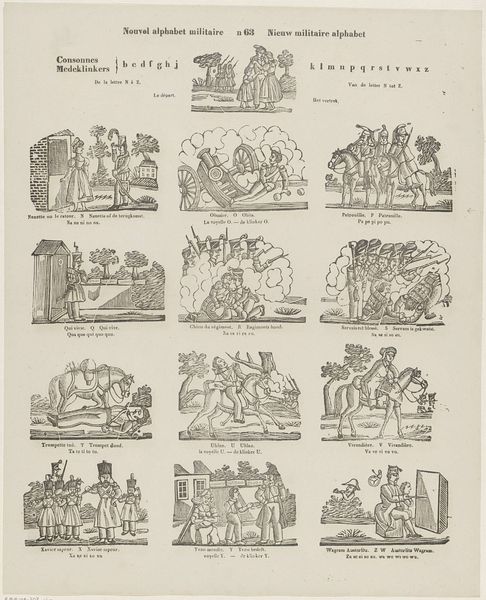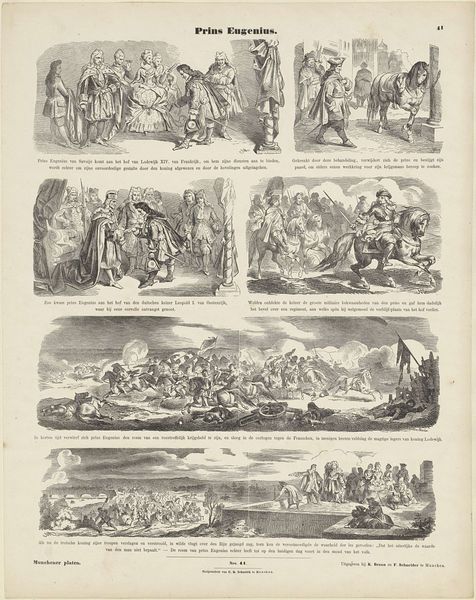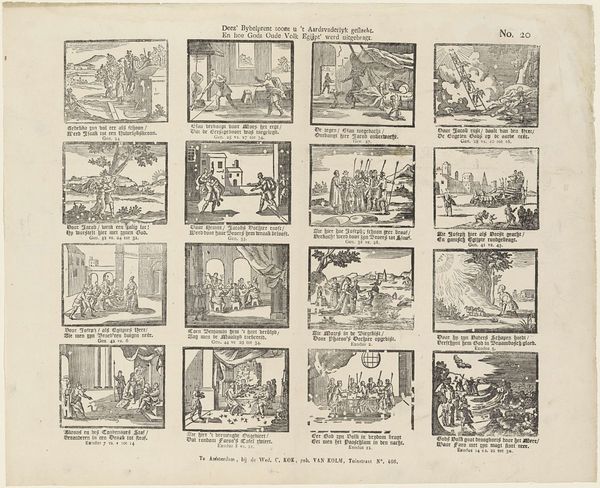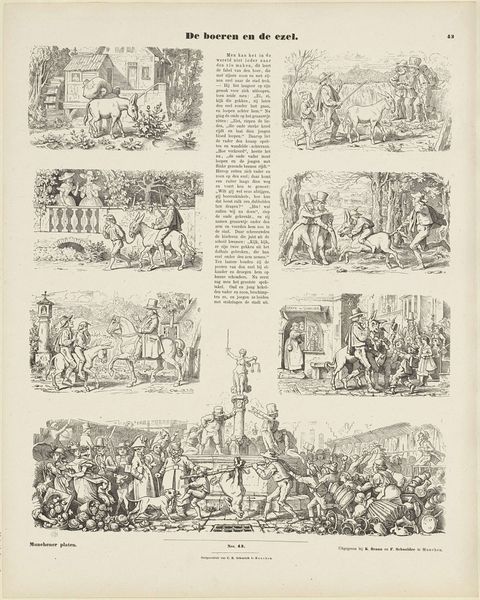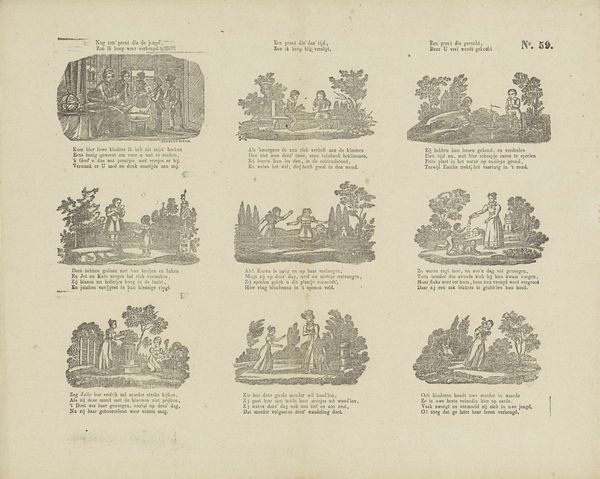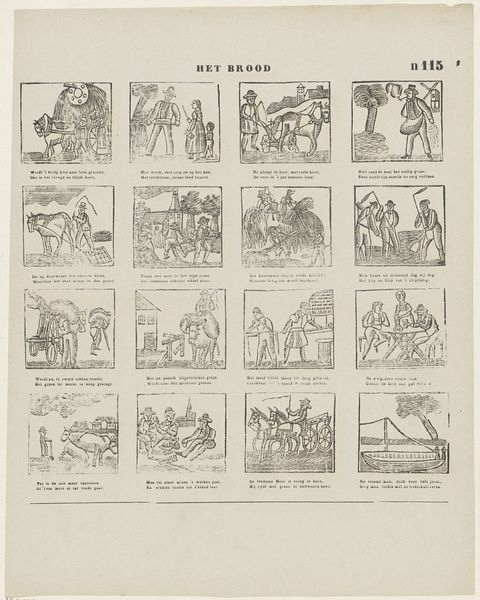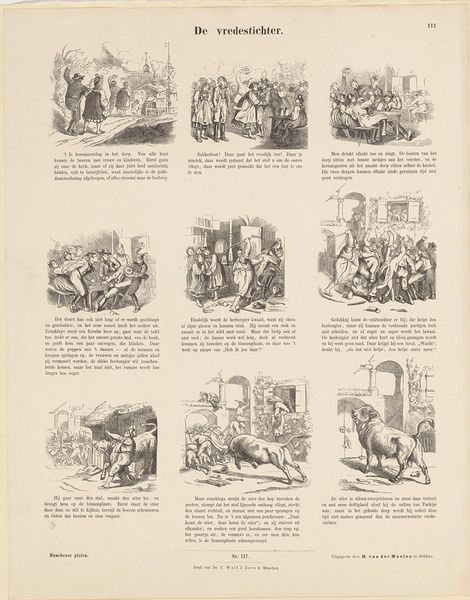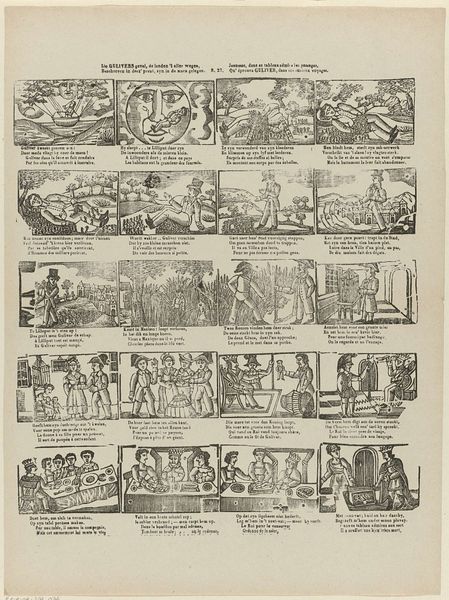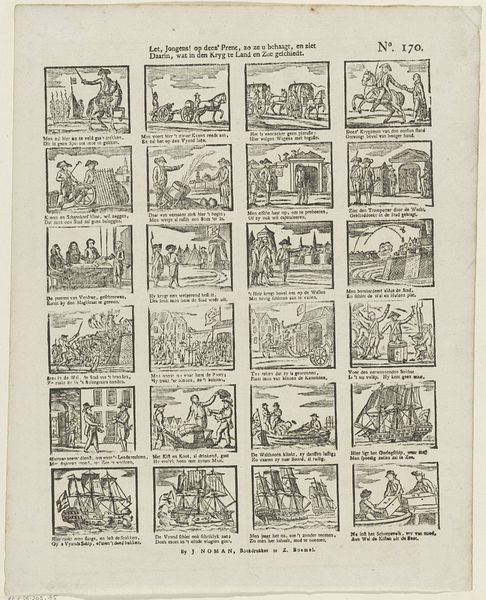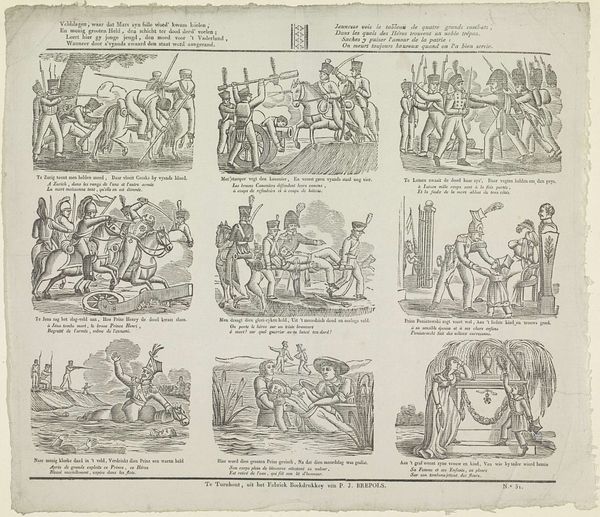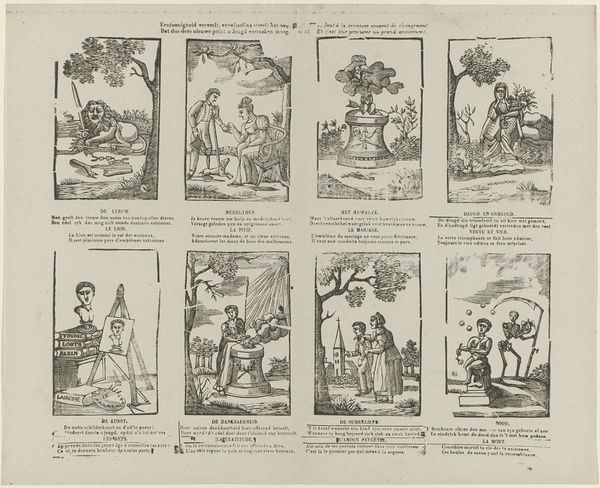
graphic-art, print, engraving
#
graphic-art
#
narrative-art
# print
#
old engraving style
#
genre-painting
#
engraving
Dimensions: height 406 mm, width 312 mm
Copyright: Rijks Museum: Open Domain
Curator: Look at the density of this work, "Spreekwoorden / Proverbes" by P.J. Delhuvenne, created sometime between 1842 and 1856. It's a print, an engraving, a veritable collection of narrative moments crammed onto one sheet. Editor: My first impression? Overwhelming. The close groupings of figures, each scene wrestling for attention. The contrast—heavy dark lines on a pale ground—creates an intense visual experience. I’m intrigued, but slightly exhausted before I even start to decipher it. Curator: And there’s a reason for that feeling! The artwork presents multiple scenes illustrating proverbs—'Spreekwoorden' in Dutch, 'Proverbes' in French as the title indicates, reflecting perhaps its intended bilingual audience and the complex social fabric of the period. The visual form mirrors the density and complexity of societal lessons embedded in proverbs. Think of this as a form of vernacular knowledge, instructing on everything from social hierarchies to work ethics. Editor: Yes, each scene acts as a microcosm, charged with symbolic meaning. The imagery itself seems rather direct—I see horses falling, bandits attacking, animals in conflict—each carrying emotional and cultural weight within a specific cultural framework. Curator: Precisely. The composition places proverbs dealing with enslaved laborers, for example, directly next to scenes depicting animals. I find this to be extremely charged, highlighting systems of oppression at work during the era. Editor: But are the meanings clear for all? A modern audience, lacking specific cultural context, might misinterpret Delhuvenne’s intentions. How do we reconcile historical readings with contemporary understanding? For instance, the ostrich hides its head in the sand. While a direct cultural proverb may reveal that the one who kills an ostrich is skilled, can it be misinterpreted through contemporary viewpoints? Curator: It's crucial to acknowledge that potential and unpack those assumptions. This requires rigorous analysis, situating Delhuvenne within a historical discourse where such social and cultural ideas are being hotly debated. This artwork is a battleground, with these old cultural ideas versus newer contemporary ideals, reflecting tension through visual symbolism and visual metaphor. Editor: Agreed. It makes you wonder about the legacy these visuals and concepts leave behind, doesn’t it? Curator: Absolutely. It’s a vivid testament to the ongoing negotiation of values, the enduring presence of these symbols in our collective memory.
Comments
No comments
Be the first to comment and join the conversation on the ultimate creative platform.
